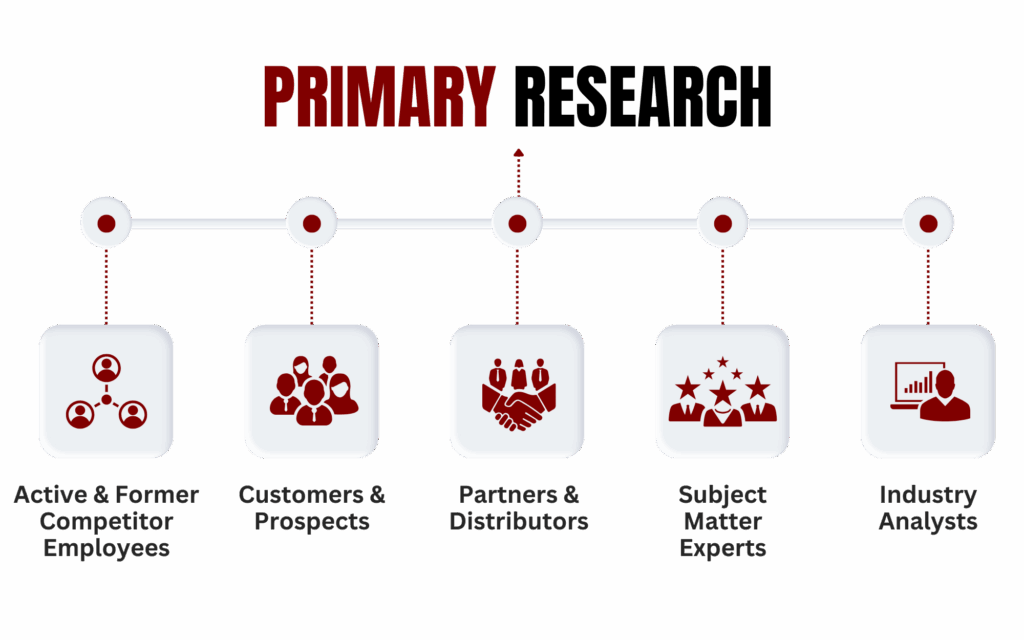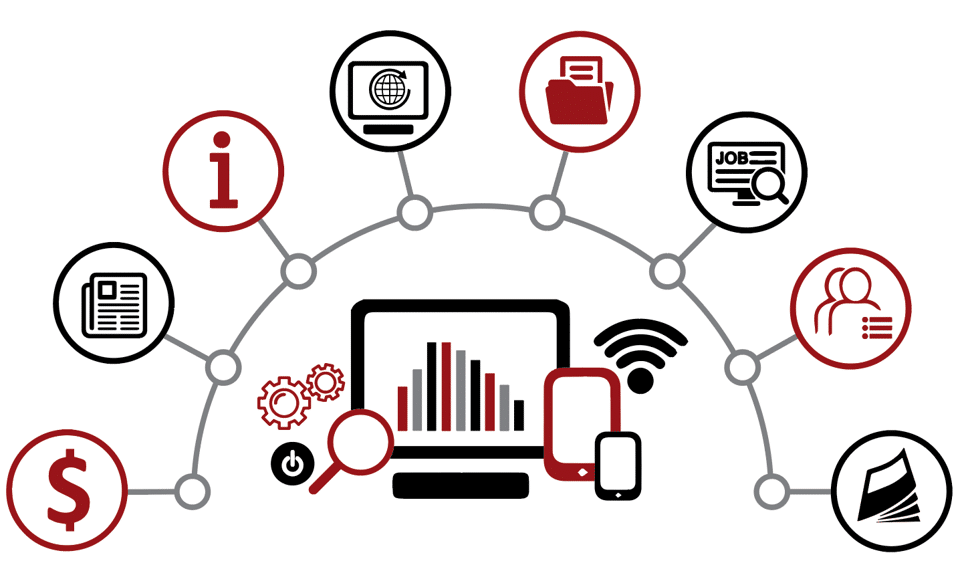Part Two of RAMP UP: A Competitive Intelligence Framework for Strategic Advantage
- Competing Products – Best Practices for Analysis and Action Starts with RIVALS
- Customer Insights That Drive Strategy: AVENUES Leads to Results
- Market Trends Analysis: A Proven Method to Outpace Competitors
- Growth Strategy: How to Convert Potential into Performance
- Strategic Planning Process: How to Build Alignment Across Teams
You cannot build an effective strategy around customers you do not understand. While organizations collect more customer data than ever, many still struggle to answer the most essential questions:
- Why do customers choose us?
- Why do they leave?
- What do they expect next?
Teams often see the behavior, churn, feedback, and product usage, but not the reasoning behind it. Avenues closes that gap. The customer insights phase of the RAMP UP framework examines the motivations, expectations, and decision drivers that surface in qualitative data and customer service interactions. Avenues replaces anecdotal feedback with evidence drawn from interviews, surveys, behavioral data, and external signals. It identifies unmet needs, clarifies what matters most to individual customers, and highlights friction in the customer journey.
Whether launching a product, refining the sales process, or improving retention, Avenues grounds your decisions in customer truth. It transforms scattered data into connected customer journeys that inform product development, marketing efforts, and service delivery.
From Data to Direction
Customer insights do more than confirm preferences. They reduce risk, align teams, and sharpen execution. Yet without structure, insights remain buried in dashboards and support tickets. Avenues provides that structure by integrating both primary and secondary market research to uncover the underlying reasons behind customer behavior.
Through direct interviews, surveys, focus groups, and observational research, you hear from the people who buy, use, and leave. Secondary research, including reviews, competitor messaging, analyst reports, and customer service data, provides context and demonstrates how individual experiences align with broader patterns and market trends. By embedding both types of research into one phase, Avenues reveals how to:
- Prioritize key features that drive engagement
- Deliver personalized customer experiences at scale
- Align messaging with what customers actually care about
- Remove friction that erodes customer satisfaction and loyalty

When paired with other RAMP UP phases, such as Rivals for competitive analysis or Market Shifts for trend tracking, Avenues provides the internal alignment needed to act with confidence. Strategy becomes faster, clearer, and more grounded in reality.

Customer Research Builds Business Insights
Customer research goes beyond understanding preferences. It reduces risk, improves cross-functional alignment, and drives better decisions across the organization.
Without clear customer insights, companies fall back on assumptions. That creates misfires—messaging that doesn’t resonate, solutions that miss the mark, and strategies built around the wrong priorities. Teams end up solving problems customers don’t have or building for audiences that don’t exist. Avenues helps organizations avoid these pitfalls by grounding decisions in evidence, not guesswork.
The impact is real:
- Companies that use data to guide decisions are 23 times more likely to acquire customers, 6 times more likely to retain them, and 19 times more likely to be profitable
- 73% of consumers say customer experience is a key factor in their purchasing decisions, ranking it above price and product quality
- Only 3% of companies are currently categorized as customer-obsessed, defined as putting customers’ needs, desires, and satisfaction at the forefront of all business decisions and actions.
Strong customer research also builds internal momentum. When teams operate from a shared understanding of what customers value, they move faster and execute more effectively. With meaningful customer insights in hand, organizations can:
- Prioritize features that solve real-world problems
- Craft messaging that reflects what customers actually care about
- Improve retention by addressing unmet needs
- Align product, marketing, and sales around a common customer truth
In short, customer research isn’t a supporting activity. It’s a strategic capability that enhances everything from roadmap to revenue.
Uncovering Customer Insights with RAMP UP
Strategy requires evidence, not assumptions. That principle anchors the RAMP UP framework. Each phase relies on research, guided by Sedulo’s Four I’s process: Information, Intelligence, Insight, and Implication. This structure ensures that findings are not only collected but transformed into decisions that drive the business forward.

In the Avenues phase, the focus shifts fully to the customer. The research examines how people make purchases, what they expect, where they encounter friction, and why they remain or leave. Avenues combines primary and secondary market research to reveal the underlying drivers behind customer behavior—not just what happens, but why.
RAMP UP blends both research types to create depth, context, and clarity:
- Primary research captures insights directly from individual customers. Interviews, surveys, and observational methods uncover motivations, emotions, and decision triggers in the customer’s own words.
- Secondary research draws from existing sources—analyst reports, competitor messaging, online reviews, and social sentiment—to benchmark performance, spot gaps, and frame smarter hypotheses.
Together, these methods deliver a full-spectrum view of the customer experience. Primary research reveals what customers are thinking right now. Secondary research connects those behaviors to larger market trends. Avenues integrates both to produce insights that are grounded, actionable, and aligned with business goals.
Primary Research: Listening to the People Who Matter Most
Primary research provides the foundation for meaningful customer insights. It connects you directly with the buyers, users, partners, and prospects who shape outcomes. These conversations reveal more than customer preferences. They uncover expectations, unmet needs, and decision-making behaviors that influence growth. Avenues applies a range of primary research methods to collect and interpret this qualitative data:
- In-depth interviews, including win/loss analysis, churn analysis, and buyer decision reviews
- Targeted surveys distributed to customers, partners, and internal stakeholders
- Mystery shopping to evaluate the buying experience in both digital and physical settings
- Focus groups and panels to explore perceptions, emerging needs, and emotional triggers
- Interviews conducted at trade shows to gather unfiltered feedback in real time
- Product teardown and use case observation to assess how offerings perform in context
This work draws input from a wide range of sources. That includes existing customers, former clients, lost opportunities, channel partners, vendors, and cross-functional internal teams. Each research plan aligns with a specific business goal, whether that is improving retention, refining a product or service, or enhancing customer engagement. By combining qualitative insights with structured analysis, Avenues identifies patterns, challenges assumptions, and produces clear findings that support confident, customer-aligned decisions.
Secondary Research: Framing the Landscape Before You Engage
Before asking customers the right questions, we scan the environment to understand what’s already being said. Secondary research sets the stage. It provides the context needed to make primary research more focused, relevant, and actionable. Avenues utilizes secondary research to uncover existing knowledge, detect market shifts, and identify key gaps. This work helps define where to dig deeper and ensures primary research efforts produce sharper customer insights. RAMP UP’s secondary research sources include:
- Competitor websites and messaging to evaluate positioning, claims, and differentiation
- Industry white papers and analyst reports to track emerging trends, technologies, and forecasts
- Financial disclosures and investor presentations to uncover strategic priorities and future direction
- Social media sentiment and online reviews to hear candid, unfiltered customer feedback in real time

This type of research benchmarks performance and highlights where expectations are rising or unmet. It is fast, scalable, and directional—ideal for spotting early signals, framing the customer landscape, and shaping smarter questions for deeper exploration. By combining both primary and secondary methods, Avenues ensures that customer insights are grounded in both personal experience and market reality.
Core Customer Analysis Methods
Customer research only delivers value if it leads to clarity. In the Avenues phase of RAMP UP, your goal is to turn raw input into strategic insight. That requires the right tools. Three of the most effective methods for producing actionable customer insights are Customer Segmentation, Journey Mapping, and Experience Evaluation.
Customer Segmentation
Segmentation lays the groundwork for a focused customer strategy. By grouping customers based on shared traits, behaviors, or needs, you can deliver more relevant messaging, make smarter product decisions, and allocate resources more effectively. Build your segmentation model using inputs such as:
- Demographics: age, job role, industry, location
- Psychographics: values, motivations, mindsets
- Behavioral patterns: buying frequency, product usage, decision triggers
- Firmographics (for B2B): company size, sector, procurement process
Strong segmentation identifies high-potential segments, avoids generic campaigns, and delivers offerings that match real-world priorities.
Journey Mapping
Journey mapping helps visualize the end-to-end customer experience. It highlights the key touchpoints where customers form impressions, make choices, and encounter friction. Focus on stages such as:
- Awareness and discovery: how people first learn about your brand
- Evaluation and decision-making: what matters when they compare options
- Onboarding and usage: where confusion or delays may occur
- Renewal or churn: what drives ongoing engagement or departure
Mapping the journey aligns teams around the actual customer experience, not internal assumptions. It shows where expectations are met, where they fall short, and where improvements will have the greatest impact.
Experience Evaluation
While segmentation and journey mapping provide strategic visibility, experience evaluation ensures that your day-to-day delivery aligns with the promise. Assess the whole customer experience by reviewing:
- Channel and partner performance
- Service responsiveness and support quality
- Friction in digital interfaces or tools
- Speed and effectiveness of problem resolution
Use this evaluation to uncover weak points, close experience gaps, and reinforce customer trust through consistent execution. The strongest strategies are the ones your customers can feel.
Practical Steps to Uncover Customer Insights
You don’t need a whole research team to start gathering meaningful customer insights. Many of the most valuable discoveries come from consistent, repeatable actions that your team can run independently. Enhance your understanding of your customers by integrating external signals with direct feedback.
- Track 3 to 5 competitors regularly
Monitor their messaging, product updates, and customer reviews. Note any shifts in positioning, pricing, or value propositions that might influence your market. - Review forums and social media conversations
Reddit, LinkedIn, and niche industry communities often reveal unfiltered sentiment, new expectations, and frustrations that haven’t yet reached your inbox. - Compare public customer sentiment with internal data
Align what customers say publicly with what sales, support, and product teams hear privately. Look for disconnects, blind spots, or missed signals. - Run post-sale interviews
Speak with both recent wins and losses. Ask what influenced their decision, what stood out, and what nearly caused them to walk away. This can be used to improve other customer relationships. - Send targeted churn surveys
Reach out to customers who recently left. Keep it short and direct. Track the themes behind disengagement and use the patterns to inform your actions. - Use neutral interviewers
Whenever possible, involve people from outside the sales or account team. A neutral voice reduces bias and draws out more candid feedback. - Listen for friction, not just complaints
Watch for hesitation, confusion, or repeated clarification. These subtle moments often point to deeper misalignments in product, process, or messaging.
Customer research works best when it becomes an integral part of your business’s rhythm. A quarterly “What’s Changing” roundtable, a monthly churn review, or a shared insights tracker builds shared awareness and keeps your team grounded in reality, not assumptions.
Outcomes of Customer Research
When executed with intent, customer research produces outcomes that shape both strategy and execution:
- Sharper segmentation and targeting
Teams identify the right customers to prioritize, understand how to reach them, and deliver messages that resonate. - Smarter product and experience decisions
Features, services, and improvements align with real customer needs, not internal assumptions or loudest voices. - Improved retention and reduced churn
Friction points and unmet expectations surface early, giving teams time to address issues before customers disengage. - Stronger alignment across functions
Sales, marketing, product, and leadership operate from a shared view of who the customer is and what drives their decisions. - Faster, more confident decision-making
Clarity around customer behavior accelerates action and removes second-guessing.
Customer insights keep your organization grounded in reality. They turn scattered feedback into focused direction, and direction into meaningful change. When you embed those insights into every decision, your strategy moves from being customer-aware to customer-aligned. The companies that grow and retain market share do more than serve customers; they build around them.
Industry-Specific Examples of Customer Insights

Customer Insights in Technology
Speed defines the technology sector. Product cycles shift fast, customer expectations evolve constantly, and competition never stays still. You may already track product usage and funnel metrics, but without understanding why customers behave the way they do, you’re working with half the picture.
Avenues fills that gap. Use win-loss interviews, churn analysis, and onboarding journey mapping to uncover what drives adoption, where friction emerges, and how expectations shift by segment. Layer in competitor messaging, analyst reports, and social sentiment to understand how buyers evaluate their options in real time. Use these insights to:
- Identify which features increase conversion and retention
- Pinpoint why certain segments stall or churn
- Align product, marketing, and sales around the actual customer journey
One materials manufacturer discovered through Avenues that enterprise buyers had started prioritizing sustainability certifications in RFPs. The team shifted messaging, documented compliance, and saw a 30% lift in enterprise contract win rates.
In a category defined by reliability and relationships, customer insights reveal what actually drives decisions and can improve customer loyalty.

Customer Insights in Consumer Goods
In consumer markets, preferences shift without warning. Trends take off overnight. Brand loyalty wavers. While scan data and sales reports tell you what’s selling, they rarely explain why people buy—or why they don’t come back.
Avenues surfaces the underlying behaviors behind each decision. Use segmentation, journey mapping, and experience evaluation to understand how customers discover, evaluate, and choose products. Monitor social conversations, product reviews, and competitor moves to uncover unmet needs and rising expectations. Focus your efforts on:
- What drives first-time purchase versus repeat buying
- How packaging, pricing, and placement influence decisions
- Where friction exists in the path to purchase
- How brand perception shifts across channels
A technology company entering a new product vertical used customer interviews and competitive analysis to validate assumptions, understand buyer expectations, and refine positioning. The insights clarified what customers valued, how competitors were perceived, and where unmet needs existed—resulting in a more focused go-to-market strategy and accelerated internal alignment.
Customer insights don’t just respond to trends. They let you shape what’s next.

Customer Insights in Manufacturing
In manufacturing, customer research often takes a back seat to operational efficiency. However, as buyer expectations evolve and procurement becomes more complex, understanding what your customers value becomes increasingly critical.
Avenues brings that understanding into focus. Use segmentation and journey mapping to examine how decisions are made, what drives vendor selection, and where friction stalls progress. Evaluate partner performance and post-sale experience to identify issues that impact renewals and long-term relationships. Consider:
- How procurement teams evaluate and compare vendors
- What technical or service factors influence loyalty
- Where onboarding or communication breaks down
- How customer needs vary across regions or use cases
One materials manufacturer discovered through Avenues that enterprise buyers had started prioritizing sustainability certifications in RFPs. The team shifted messaging, documented compliance, and saw a 30% lift in enterprise contract win rates.
In a category defined by reliability and relationships, customer insights reveal what actually drives decisions and can improve customer loyalty.

Customer Insights in Professional Services
Professional services run on trust. Referrals, reputation, and expertise open doors—but without a clear view into what clients value most, growth stalls.
Avenues uncovers those signals. Use journey mapping, segmentation, and post-engagement interviews to track how clients evaluate firms, where trust is gained or lost, and what influences retention. Analyze competitor messaging, proposal feedback, and client sentiment to identify gaps in positioning and delivery.
Anchor your research on:
- How clients define value and ROI
- Which differentiators influence selection
- Where service delivery falls short of expectations
- How needs shift by industry, maturity, or function
One consulting firm used Avenues to uncover that clients favored speed and flexibility over depth. The result: fixed-fee sprints, modular offerings, a 20% boost in win rates, and faster time to onboarding.
In high-stakes engagements, customer insights turn relationships into results.
RAMP UP Your Customer Insights For a Winning Strategy
Customer insight requires more than collecting feedback. It demands a clear understanding of customer behavior. Primary research delivers depth through interviews, surveys, and direct observation. Secondary research adds context by analyzing reviews, social sentiment, competitor messaging, and broader market signals. Together, they reveal what your customers value, expect, and avoid.
You do not need a large research function to get started. With the right questions, simple tools, and consistent routines, any team can begin generating meaningful customer insights. For high-stakes decisions or harder-to-reach audiences, an outside partner provides structure, neutrality, and reach.
In a market where preferences shift quickly and expectations continue to rise, guesswork fails. The Avenues phase of RAMP UP keeps your strategy aligned with the people you serve. Whether you build the process internally or engage outside expertise, the goal stays the same: turn feedback into insight, and turn insight into action to build around your customer effectively.
Frequently Asked Questions about Customer Insights, Avenues, and the RAMP UP Framework
What are customer insights, and how does the Avenues phase generate them?
Customer insights reveal why customers behave the way they do—what motivates them to buy, why they leave, and how they make decisions. The Avenues phase turns raw input into actionable insight by combining primary and secondary research. It surfaces unmet needs, highlights friction, and clarifies what customers truly value.
What does the 'A' in RAMP UP stand for, and why does it matter?
The “A” stands for Avenues, the second phase in the RAMP UP framework. Avenues focuses entirely on the customer—how they think, decide, and experience your offering. This phase grounds strategy in reality and replaces assumption with evidence, driving better decisions across product, marketing, sales, and service.
How is Avenues different from traditional customer research?
Avenues doesn’t stop at surveys or satisfaction scores. It blends qualitative and quantitative methods—interviews, churn analysis, journey mapping, social sentiment, and more—to build a complete view of the customer landscape. The insights generated go beyond preference to reveal the root drivers of loyalty, frustration, and decision-making.
Can teams use Avenues without external support?
Yes. Avenues was designed to be modular and scalable. Even without a formal research team, internal teams can start with structured interviews, churn surveys, post-sale conversations, or social media listening. The key is consistency and focus. Small, repeatable practices lead to meaningful insight over time.
Where can I explore the full RAMP UP framework and other phases?
This page is one part of the broader RAMP UP framework. You’ll find additional phases—Rivals (competitive intelligence), Market Shifts (emerging trends), Potential, and Understanding & Planning—linked throughout the series. For a complete view of how RAMP UP supports strategic growth, visit the RAMP UP resource hub.

